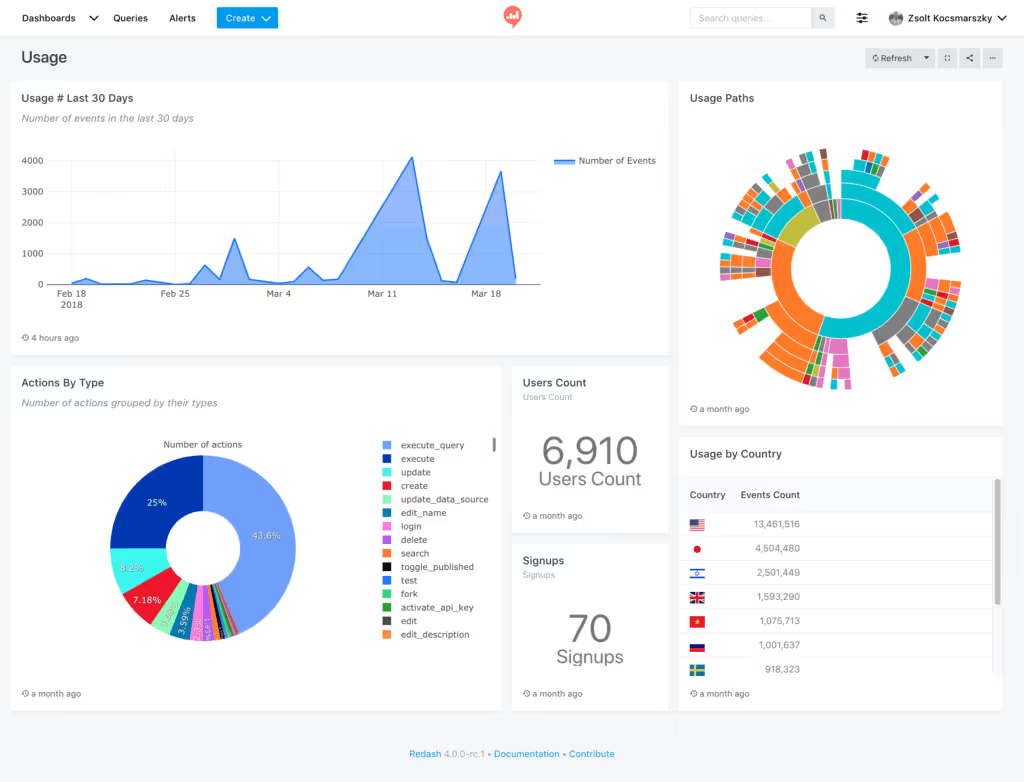In a crowded media landscape, successful companies make quick and targeted calls around what to publish and how to position it on their sites. Analytics needs to work in seconds – not minutes or hours – but most analytics tools do not offer the low latency needed.
Furthermore, with the most cutting-edge teams using data to predict future outcomes and make automated decisions, stepping into the world of advanced analytics is fast becoming a necessity to remain competitive.
The opportunity for content-focused organizations
In terms of what to publish, having a deep understanding of your users’ behavior when interacting with site-wide content is imperative. The subsequent effect of this behavior on organizational objectives, such as engagement or revenue generation is also crucial. This requires building a well-understood centralized data set, so metrics from across the business can be used together to see the big picture and ensure fully-informed decisions are made.
In terms of the speed at which things change in the world of content, by using ultra-low-latency behavioral data you can react in real time, or even use predictive analytics to act ahead of time (e.g. churn prediction models can connect with users to prevent them leaving your platform).

The challenges with editorial analytics
Data latency: many tools cannot provide near-real time data latency. The result is that data is less relevant by the time it hits your storage destination.
Advanced analytics: many companies make big decisions from very limited data – such as page views and time on page – without enough metrics to gain real insight into reader behavior.
Data accuracy: many tools provide data which cannot accurately map page views to sessions and users. Part of this is as a result of cookie blockers and ITP restrictions. The result is often an inflated user count and inaccurate segmentation.
An editorial analytics use case
Streaming guide ‘JustWatch’ wanted to deliver highly personalized content and ads to its users to improve their experience and increase ROAS for advertisers.
JustWatch set up Snowplow Behavioral Data Platform (BDP) in just three weeks. Using the platform, the company creates comprehensive, intelligent user profiles for more than 50 million anonymous movie fans. By doing this, it has optimized trailer delivery and extended viewing time, increasing ROAS for advertisers.
This has increased the efficiency of their campaigns by 100%.
Why choose Snowplow for editorial analytics?
Firstly, Snowplow was built for advanced analytics from the ground up. Our tooling gives you full control over your data assets, so you can define every aspect of your metrics to suit your business context. You can use this to create custom scores for users or user groups and serve them the right content at the right time. This allows you to shape your editorial analytics around the exact media types you publish and the specific audience behaviors you drive.
The next challenge we solve for is latency. Snowplow can forward data to your third-party destinations in real time, using Google Tag Manager Server-Side, or get data to your warehouse or lake in just a few seconds. This means you can adapt content as your users are moving through your site. An example use case, used by many leading publishers, is the rapid prototyping of page configurations and headlines on release of an article, in order to promote maximum engagement.
Another benefit to consider is that Snowplow data is highly granular and accurate. You get over 130 metrics out of the box, which gives you a deep view of user behavior on your site that you simply don’t get from other tools, and each of these metrics comes pre-validated. These metrics range from geo location, to horizontal scroll depth and user identity (avoiding ITP restrictions, due to our unique deployment model).
As a result of these features, media organizations can innovate in the most user-centric way, reacting to breaking news events, viral content spikes and live premieres.

